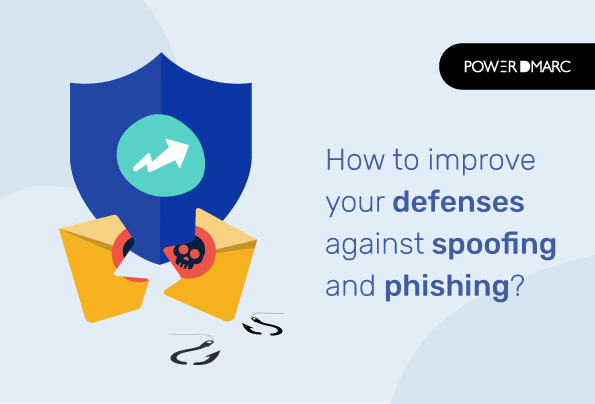Impersonation attacks like phishing and spoofing can dramatically impact the health of your domain and lead to authentication failures, email compromise, and much more! This is why you need to improve your defenses against them, starting today. There are various methods you can deploy to ensure that your emails are adequately protected against phishing and spoofing attacks. Let’s discuss what they are!
Key Takeaways
- Implementing SPF can help certify that only authorized IPs can send emails from your domain, significantly reducing the risk of spoofing.
- DKIM protects your emails by using digital signatures, enabling recipients to verify that a message hasn’t been altered in transit.
- DMARC allows you to direct email servers on how to handle suspicious messages and provides reports to monitor your domain’s defense against attacks.
- Utilizing features like SPF flattening and BIMI can further enhance your email security and brand visibility to clients.
- Signing up for email authentication services can provide additional tools to help protect your domain from phishing and spoofing attacks at no cost.
Email Authentication Protocols to prevent impersonation attacks
- Sender Policy Framework (SPF)
A good way to start out is by deploying SPF. Sender Policy Framework, which is based on the DNS of your domain name, can certify that the IP used for sending an email has the right to do so. It prevents fraudulent use of your domain name and prevents third parties from pretending to be you. The SPF protocol is particularly effective against phishing and spoofing attacks because they often take advantage of such mistakes. If a mail server states that it has been sent by a mail server whose IP address can be attributed to your domain then in general operating systems will check twice before delivering an email. In this way mail servers that do not respect SPF are ignored successfully. To put it simply, the “SPF Protocol” allows the owner of a domain (for example bb-online@example.com) to send an authorization to its DNS authority.</Simplify Security with PowerDMARC!
li>
- DomainKeys Identified Mail (DKIM)
DomainKeys Identified Mail, or DKIM, is an email authentication system that uses digital signatures to verify the source and contents of a message. It is a set of cryptographic techniques for verifying the source and contents of email messages in order to reduce spam, phishing, and other forms of malicious email. Specifically, it uses shared private encryption keys to authenticate the sender of a given message (the key aspect here being that only the intended recipient should be in possession of this private key), ensuring that email cannot be “spoofed,” or falsely represented by impostors. It also allows an authorized recipient to detect any changes made to a message after it has been sent; if the organization responsible for validating these signatures detects data corruption in an email, they can simply reject it as false and notify its sender as such.
- Domain-based Message Authentication, Reporting, and Conformance (DMARC)
DMARC exists for several reasons. First, DMARC provides you with a way to tell mail servers which messages are legitimate, and which ones are not. Second, DMARC provides you with reports of how well-protected your domain is from attacks. Third, DMARC helps protect your brand from being associated with messages that could harm your reputation. DMARC provides more protection against phishing and spoofing by verifying that an email message really originated from the domain it claims to have come from. DMARC also enables your organization to request reports about the messages you receive. These reports can help you investigate possible security issues and identify possible threats, such as malware infection or phishing attacks targeting your organization.
How can PowerDMARC help you protect your domain against phishing and spoofing attacks?
PowerDMARC’s email security authentication suite not only helps you with the seamless onboarding of your SPF, DKIM, and DMARC protocols but provides many more additional benefits including:
- SPF flattening to ensure that your SPF record stays valid and under the SPF hard limit of 10 lookups
- BIMI for visual identification of your business emails. BIMI ensures that the emails reaching your clients contain your brand logo that can be spotted by them even before they open the message
- MTA-STS to encrypt your emails in transit
To enjoy free DMARC, you need only sign up and create a PowerDMARC account without any additional costs. Start your email authentication journey with us for a safer email experience!
